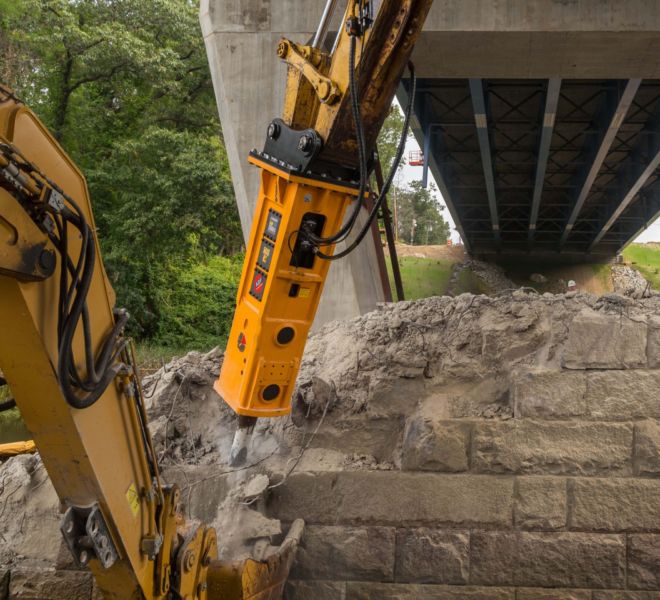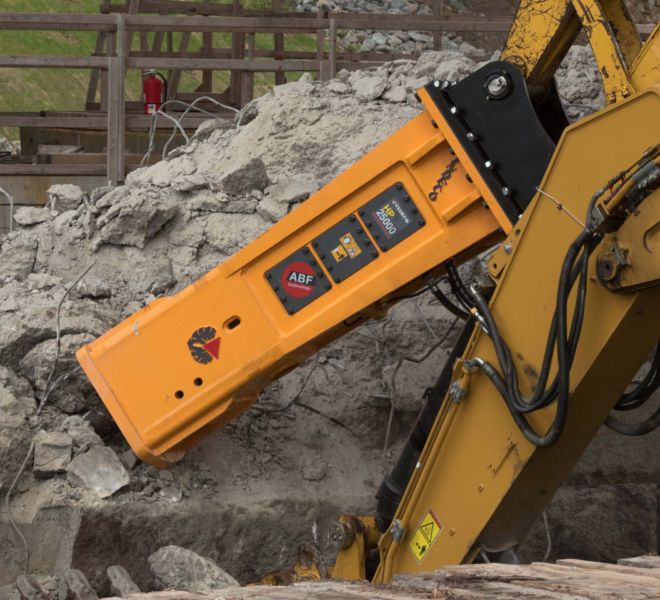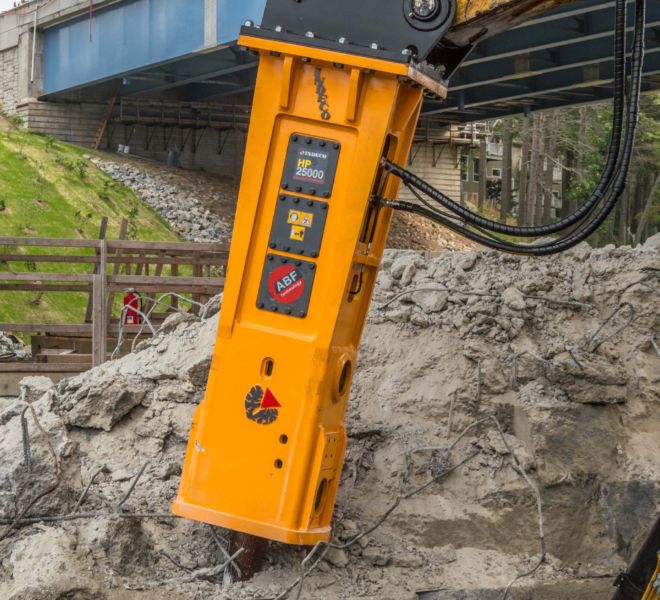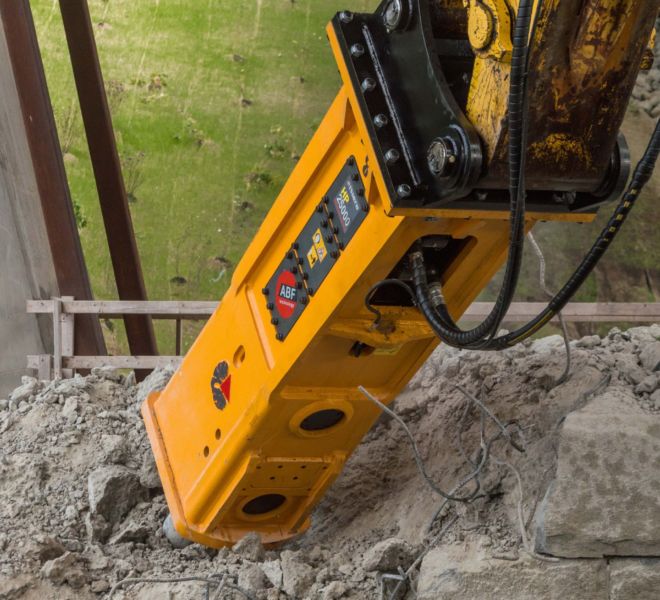An HP 25000 dismantles a bridge pier
An HP 25000 (HP 18000 for markets outside North America) performed demolition of a large pier of the John Greenleaf Whittier Bridge crossing the Merrimack River, an infrastructure now replaced by a new a bridge.
Built in 1951, the John Greenleaf Whittier Bridge stretched over the Merrimack River in Massachusetts, connecting the towns of Amesbury to the south and Newburyport to the north.
It is a classic truss bridge entirely built in steel and representative of its era of construction.
For some time the bridge had been in a state of disrepair, and so it was decided to demolish and replace it with two new bridges built alongside each other.
The first, the northbound bridge, is currently open to traffic in both directions, while the southbound bridge now in phase of completion is scheduled to open in July 2018 allowing traffic to flow on both sides.
A champion of productivity replaces explosives.
From the scope statement, the Massachusetts Department of Transportation (MassDOT), which commissioned the bridge, imposed the lowest environmental impact possible both during the construction of the two new bridges and during the phases of demolition of the old bridge, which included cutting and removal of the steel structural elements followed by demolition of the piers. The works were awarded to Atlantic Coast from Saugus Massachusetts, a contractor specialized in the dismantling of port and river structures. To prepare for this challenging job, Atlantic Coast, who had had never bought or used Indeco hammers, decided to purchase a HP 25000 FS and couple it to a Komatsu PC 1250 to be operated from a barge moored near the pier. The HP 25000 FS standard hammer fitted with an Indeco underwater kit at Indeco North America in effect substituted explosives, which would have probably been the only solution considered given the size of the pier if the restrictions imposed by the MassDOT hadn’t prevented their use. The job proved a particularly tough application also because, as is often the case in underwater demolitions, the operator couldn’t always see well enough where to position the hammer and inevitably ended up knocking the submerged pier or its rebars, putting the attachment to a hard test. But despite the operating conditions, the HP 25000 FS was totally up to the task, managing to demolish a massive structural element (almost 24 m long, over 2 m wide in the upper part and almost 4 m in the lower). In addition, the pier was built in reinforced concrete that was especially hard (with a compression strength probably over 40 MPa) and was covered with large blocks of granite that made the job even more difficult.
Intended for quarries, ideal for the toughest demolitions.
When in the early 2000s Indeco decided to start up a line of big hammers, first producing the HP 12000, then the HP 18000 (respectively the HP 16000 and HP 25000 for the North American market), it focused on equipment designed mainly for use in quarries as an alternative to blasting, or at most for excavation works in preparation for infrastructure in areas where the rock recorded high values of compression strength. Thanks to these two models, Indeco has become a point of reference around the world for that market segment, which was demanding equipment with power and sizes above what the market was offering.
Despite the success in the applications it was created for and the somewhat difficult transportability of the excavator they are intended to be coupled with (45-140 metric tons), these two “giants” also prove extremely effective in the demolition of large structures such as the pier of the bridge over the Merrimack River.
Other applications in the U.S. the hammers have recently been used for include the dismantling of the nuclear power plant in Zion, Illinois, where the demolition employed two HP 25000 , and the demolition of piers of the Kosciuszko bridge, where another two HP 16000 hammers were used to reduce the time needed to demolish the large structural elements. These applications have therefore demonstrated how the efficiency, productivity and reliability of the two models have been recognized also outside the quarry sector and have opened the road to new demolition techniques.










